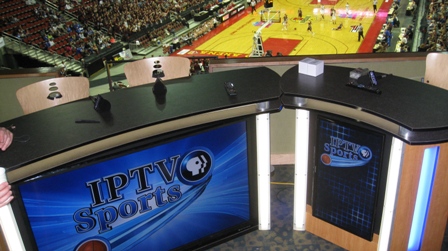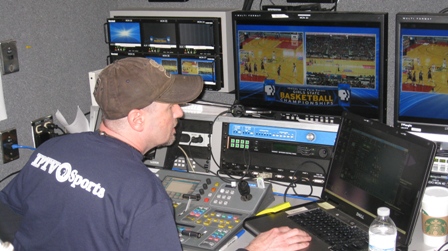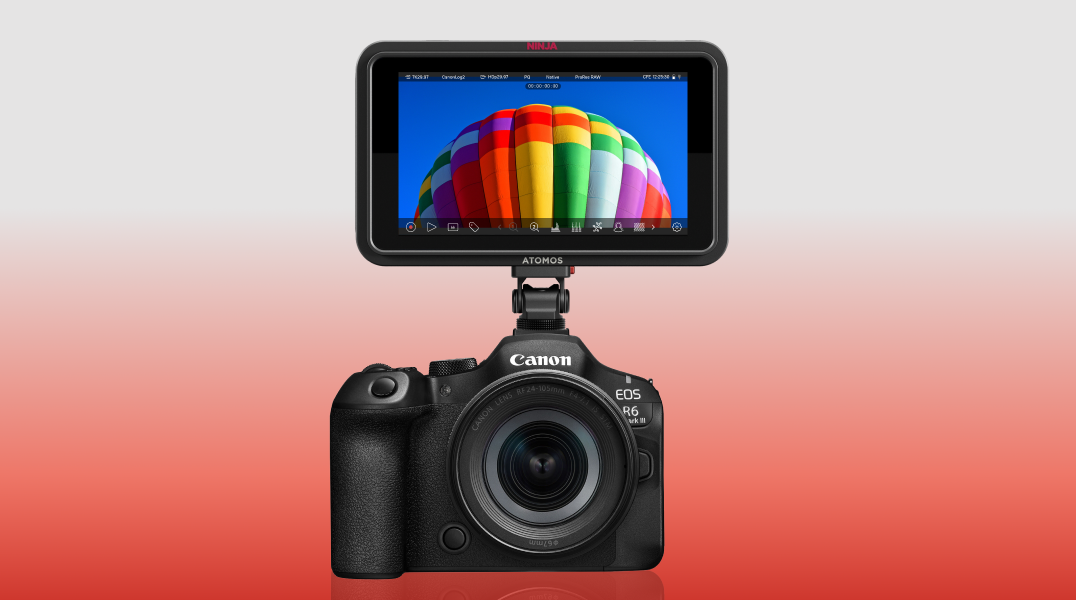Raising Expectations in Local Sports Coverage
JOHNSTON, IOWA—The Iowa Public Television production truck went into service in 2008 and since then it has done quite a few live and live to recording events. The vast majority have been concerts or debates and while those events were produced in high quality on a par with any national program, they really haven’t taxed the capabilities of our truck. That changed in early March when IPTV took on the live broadcast of the Iowa State Girls High School Basketball Tournament at the Wells Fargo Arena in Des Moines. This is the first event in a multi-year agreement that includes a variety of other girls high school sports.

Earlier this year, IPTV took on the live broadcast of the Iowa State Girls High School Basketball Tournament at the Wells Fargo Arena in Des Moines, the first event in a multi-year agreement that includes a variety of other girls high school sports. One of the challenges that a local station faces when tackling a project like this is making sure that the event looks as good as it can. Thanks to ESPN and the plethora of regional sports networks that are available, viewers have an expectation on how a sporting event will be covered and how it will look on the air. Basketball is a great example because it’s a popular sport that has been televised for decades so there is a basic formula for how it should be captured which makes it fairly easy to plan for and simultaneously fairly complex to implement.
DYNAMIC AND ANIMATED
Our basic truck configuration includes six Sony 1500 HD cameras with a variety of Canon lenses, a 48-input GVG Kayak switcher, a 64-channel SSL audio console, six-channel EVS system, two-channel ChyronHego Hyper-X graphics system along with an integrated Ku uplink. We augmented the truck to provide some basketball specific enhancements, including a GoPro camera mounted behind the backboard to provide a downward look for shots and action below the rim. We also incorporated an automated scoreboard and clock system that received data from the arena’s scoreboard system which takes some stress off our soon to be replaced ChyronHego graphics system.
For the vast majority of the remote productions we have done, the truck has been great. But in live sports everything seems to take on a more dynamic and animated presence. Graphics no longer fade in and fade out, they are flying on and off the screen coupled with an appropriate audio effect. Utilizing these effects created a challenge. Due to the limited number of channels in our existing EVS system we were required to build and record a number of these effects within the Kayak. Now while the switcher is capable of doing this, the process involved in capturing and subsequently displaying them is somewhat clunky and makes the technical director’s job a little more difficult. While these seem like minor stresses, in the heat of the action they can rapidly add up.

IPTV Technical Director Neal Kyer programming animated graphics into the GVG Kayak Switcher. Consider that the lulls in the action of the game are filled with slow-motion replays from various angles or pertinent prerecorded or live content so from the production standpoint, there really aren’t any lulls at all. When I think about comparing the live production of a concert to that of a basketball game, the former is like taking a leisurely drive on a meandering country road and the latter is like racing on a treacherous mountain road and pushing the limits of the driver and the vehicle. Both have the potential for the unexpected but the pace determines the time to react and the consequences of failure to react in a timely fashion.
COMPETING CONTENT
So while we are able to produce a very high-quality program, we were also able to see where we need to look at improvements and modifications to make the ride a little less hair-raising for the crew. One item we are looking at is our EVS system and whether it can be modified or replaced to allow for external clip and alpha channel playback instead of relying on the internal system within the Kayak. We’ll also be adding at least one or two more GoPros to provide interesting POV cameras as most sporting events have potentially interesting locations that don’t lend themselves to traditional full-sized cameras such as the net on volleyball or the goals on soccer.
Earlier in this column I implied that the quality of the production has to be as high as we can possibly make it. Probably the primary reason for this is that even in the most rural areas, the viewers have access to so many content sources. I first noticed this phenomenon in the old days of NTSC when viewers started asking why my broadcast signal didn’t look as good as the satellite-delivered cable feed. Now the quantity of sources has further increased to include OTT, Blu-ray and a host of other options and simultaneously the home viewing option probably has better performance capabilities than any of sources available. So our content has to compete in that environment and I think we nailed it with our basketball coverage. Visit www.iptv.org/sports and watch our production on one of the games and let me know what you think.
The professional video industry's #1 source for news, trends and product and tech information. Sign up below.
One question that I have been asked and I am sure will be asked again is if it is really worth the time, money and effort to cover events such as high school sports. I often say and truly believe that the value of a local station is the local content it creates and distributes. When I look at something like I have discussed in this article, there is a strategic component that needs to be considered and understood. For a local television station to survive and thrive, there needs to be a symbiotic relationship between the station and community or communities it serves. Creating interesting and compelling local content is one key way of developing and strengthening that relationship.
Bill Hayes is the director of engineering for Iowa Public Television. He can be reached via TV Technology.
Bill Hayes is the former director of engineering and technology for Iowa PBS and has been at the forefront of broadcast TV technology for more than 40 years. He’s a former president of IEEE’s Broadcast Technology Society, is a Partnership Board Member of the International Broadcasting Convention (IBC) and has contributed extensively to SMPTE and ATSC. He is a recipient of Future's 2021 Tech Leadership Award and SMPTE Fellow.

